1869: Mrs Richard Seddon
October 6, 2023
By AHNZ
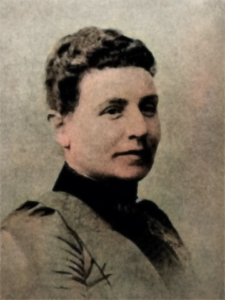
Richard and Louisa Seddon, married on 13 January, 1869, were one of New Zealand’s great power couples. Women like Mrs Seddon put lie to the idea that women did not have freedom and a powerful role in society before The State gave them permission to vote in the government elections we are supposed to think of as ‘power’. Louisa stated herself that her apparently patriarchal husband “never made a major decision without first consulting her.”¹ Yet, Louisa is also quoted as saying she is not one of the New Women (such as Kate Sheppard and Anna Stout) but that “I am quite satisfied to leave politics and public affairs to my husband.”² What is this paradox of the Seddons?
The couple met in Melbourne when Louisa was literally the wealthy and attractive girl next door to the hotel in which Seddon boarded. She was only 14 and the Englishman (20yo) was a very long way from making fame and fortune so the well-to-do family told him to back off and come back when he was worthy. After 2 years in New Zealand Seddon still was not worthy but he came for Louisa anyway and somehow conned the Spotswood family into believing otherwise.
Until the middle of 1870 the couple had no home of their own at all. Richard had made a life for himself in the wild frontier of Westland by being a strong man in a time of Honor Culture. He had failed to find gold but scratched his living selling goods to those who did in a fairly poor and especially damp section of the roadless goldfields around Greenstone and Stafford. It was already being abandoned so low-end Storekeeper Seddon’s plan to mine people rather than gold wasn’t paying. He also made his living as a bush lawyer ( an unqualified legal advocate) for miners. Sometimes those miners didn’t pay up so an essential part of Richard’s vocation was sustaining a reputation of a violent man who occasionally beat up the men who were indebted to his store.
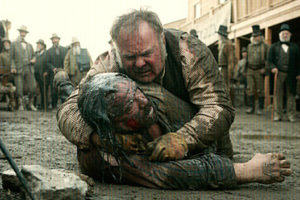 “Miners prized physical strength…approved of such pugilistic behavior…defenders of the miners’ code of honour” writes Brooking in Seddon’s biography. Contemporary sociologist, Thornstein Veblen, defined this honor as “successful acts of aggression” within the bounds of “ceremonial code.” Some men go no further but others, if they find money to do so, evolve a more advanced culture and enter a higher strata of class. Wealthy miners started dressing up and behaving in incredibly lavish ways with fine foods, clothing, drinking, opera, and objects. When Veblen wrote about “conspicuous consumption” what he had in mind was miners who purchased sandwiches that included as filling a finely-shredded £5 note and also used the same as paper to light their pipes. “With a population that was almost entirely male, it is hard to understand why those rugged men were so fastidious as to their attire. Yet they were so,” wrote Lord (1976) but it’s easy to understand Seddon’s situation if you’ve read a little Veblen.
“Miners prized physical strength…approved of such pugilistic behavior…defenders of the miners’ code of honour” writes Brooking in Seddon’s biography. Contemporary sociologist, Thornstein Veblen, defined this honor as “successful acts of aggression” within the bounds of “ceremonial code.” Some men go no further but others, if they find money to do so, evolve a more advanced culture and enter a higher strata of class. Wealthy miners started dressing up and behaving in incredibly lavish ways with fine foods, clothing, drinking, opera, and objects. When Veblen wrote about “conspicuous consumption” what he had in mind was miners who purchased sandwiches that included as filling a finely-shredded £5 note and also used the same as paper to light their pipes. “With a population that was almost entirely male, it is hard to understand why those rugged men were so fastidious as to their attire. Yet they were so,” wrote Lord (1976) but it’s easy to understand Seddon’s situation if you’ve read a little Veblen.
In Veblen’s book physical prowess, hard work, gambling, fist-fighting, horse-racing, and cock-fighting are all identified as marking this stage of culture. Richard and Louisa Seddon’s son Tom writes in his autobiography that cock-fighting was still popular on the Coast when he was young and horse-racing was to remain a mainstay past-time for some decades yet to come.
For 20 years one of Melbourne’s upper class ladies, Louisa, worked behind a bar on the wild West Coast. As she later said, this gave her an eye for sizing people up with particular emphasis on how much money they had left. If thrashing debtors to pay up was one job then another was knowing when to cut off someone at your public bar (even if you say it’s because they’re “drunk”) because you’ve sized up that they’ve become “tight” for money. When Louisa’s mother visited to check in she was appalled at the low state of living the duplicitous Richard had reduced her daughter to. She wanted wanted to take Louisa home to Australia again. Initially the couple had no house but lived with friends until in mid-1870 the pregnant Mrs Seddon “went to the store and cleared the rooms behind it to make her home. She tore up her wedding clothes for curtains, and covered packing cases to make tables and dressing tables.” That’s the way it was for the first 4 children of 11³.
“…occasionally serious disputes broke out and resort was had to trial by combat…Both men went outside, stripped to the waist and fought till neither had the strength to continue in spite of their desperate efforts to do so……on finding the Canadian neither able nor willing to pay, gave him a good thrashing since that seemed the only means by which the debt might be honorably discharged.” – p12 King Dick, R Burdon (1955)
“I believe that R J Seddon had a store at Big Dam before he got the “inside info” of the initial strike at Kumara – so he upped stakes and headed there pronto. And so NZ history was changed.” – John Rosanowski, West Coast Recollect, Facebook (2019)
“Some mystery still hangs over how he received such early notice of the rush, but it seems clear that he used his insider networks to learn about it before others.” – p45, Brooking (2013)
“Richard tried to get into the local government. In 1876, he tried to win the seat for Hokitika and lost. The following year he met with success when he became the first mayor of Kumara. Owning a claim there also, he opened a fine establishment he called the Queens Hotel.
Unfortunately, soon after opening, the gold fever waned. The lack of hotel business resulted in the Seddon’s filing for bankruptcy. In 1879, Richard won the seat for Hokitika and never looked back.” – DISCO (2013)“A honorific act is in the last analysis little if anything else than a recognised successful act of aggression; and where aggression means conflict with men and beasts, the activity which comes to be especially and primarily honourable is the assertion of the strong hand. ” – Veblen (1899)
“He is no longer simply the successful, aggressive male, — the man of strength, resource, and intrepidity. In order to avoid stultification he must also cultivate his tastes,…He becomes a connoisseur in creditable viands of various degrees of merit, in manly beverages and trinkets, in seemly apparel and architecture, in weapons, games, dancers, and the narcotics.” – ibid
“Even the most law-abiding believed that it was quite legitimate to wrestle or box villains into submission if they had breached accepted norms of behavior.” – p35 Brooking (2013)
“The diggers as a class also spent a deal of money on personal adornment. Expensive rings, tie pins and watch chains of gold and greenstone…the whole get-up being most elaborate.” – p201, Lord (1976)
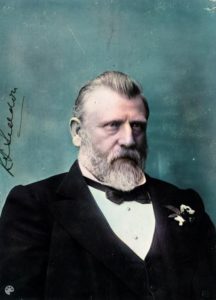 The future King of New Zealand was then just another scrapper like so many other anonymous men lost to history. Arguably Seddon was just as guilty of abducting a young bride by employing lies and deception as another of our famous politicians Edward Gibbon Wakefield who had done the same to a similarly upper-class girl of similar age. But Wakefield had been arrested and imprisoned; Seddon managed to pull the caper off. Ref. 1827: The Trial of the Wakefields, AHNZ
The future King of New Zealand was then just another scrapper like so many other anonymous men lost to history. Arguably Seddon was just as guilty of abducting a young bride by employing lies and deception as another of our famous politicians Edward Gibbon Wakefield who had done the same to a similarly upper-class girl of similar age. But Wakefield had been arrested and imprisoned; Seddon managed to pull the caper off. Ref. 1827: The Trial of the Wakefields, AHNZ
Thanks to his bush-lawyering and connections Seddon knew about the Kumara gold rush just as it was breaking and promptly re-located. He used his fists to beat down the competition and his legal connections transfer the exclusivity granted by his publican’s licence. It was political pull power, not business skills, that raised Seddon from couch-surfer to power and fame. Kumara boomed and took the Seddons’ Queen’s Hotel with it. Still, he was financially bankrupt by 1878 but that was no problem; His political star was up up and away! Richard became Mayor. Richard became a Provincial Councilor. Richard became a Member of the House of Representatives. Minister. Prime Minister. The Seddons met Queen Victoria. The Seddons met the Pope in Rome!
Louisa Seddon was just a kid when this wild ride started but she was absolutely essential to the very possibility of Richard rising up above middle-class scruffian of the Wild West Coast. In his mighty tome of USA-NZ comparative analysis, Fairness and Freedom (2012) that “Of major importance in the Lib-Lab coalition were their able, active, and highly political wives: Ellen Ballance, Anne McKenzie, Maud Reeves, Louisa Seddon, and Theresa Ward. Most of them played major roles only in their husbands’ careers but in the public life of New Zealand.” Ref. 1893: Richard Seddon assumes Premiership of New Zealand, AHNZ
Louisa could run an electorate office, plan banquets and balls, and run a hotel. But lots of women could do that and raise 11 kids in Colonial New Zealand, Louisa was even more. She was the one who could take a thug from a back-water store on the wet side of a far-away Crown Colony and make him King of New Zealand. Richard simply didn’t have the intellectual firmware for a life of high-level schemes and scams, butlers and maids, bank bailouts, palaces, royal honors, estate confiscations, women’s suffrage, Maori misdirection, South African invasion, State socialism, and nationalising nurses. Louisa belonged that sort of world, not Richard. It was her confidence in him that allowed him to change his stars. Yet, it is Richard who has all the articles and books written about him. It is Richard we think of with his massive tomb in Bolton Street Cemetery and the many Seddon Roads and Seddon Streets all around New Zealand. Mrs Seddon was clearly a great power in her own right. She would have had to be.
“During this whole political career my father made no major political decision without first consulting my mother.” – Elizabeth Gilmer (daughter,) p205 Women of Westland (1998)
“My mother would miss…being my father’s representative in the electorate in his absence.” – p45 Seddon (1968)
“In her day, Mrs Seddon…wielded considerable political influence. There were few keener politicians than Mr Seddon’s Victorian wife.” – Sydney Morning Herald (1931,) Trove
“The female, not the male, determines all the conditions of the animal family. Where the female can derive no benefit from association with the male, no such association takes place.” – Robert Briffault
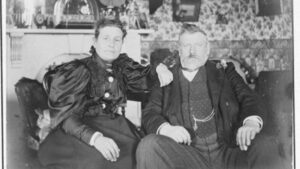 In March 1895 the entire Seddon household, now New Zealand’s first family, re-located from Kumara to the capital, Wellington. It must have been a bit like King James of Scotland re-locating to London to become King of England but here it wasn’t the old sick Elizabeth who had died in power but Premier John Ballance. The new King and his family from the outskirts of the realm were outsiders who would have to overcome “initial snobbish dismissal” to integrate into Wellington society at the top of the food chain. It was like being the new kid at school on a grand scale but they succeeded at this too. The entire household was transported on the Government steamer Hinemoa including piano, organ, pets, ponies and poultry, and a shrieking seasick maid, as Tom Seddon wrote in the family biography. In Wellington, Louisa had very recently founded New Zealand’s first women’s organisation which helped establish her role as new alpha woman: the Women’s Social and Political League. The Seddons would hold this Premiership for 13 years, more than anyone before or since, and it would end only when Richard died in office in 1906.
In March 1895 the entire Seddon household, now New Zealand’s first family, re-located from Kumara to the capital, Wellington. It must have been a bit like King James of Scotland re-locating to London to become King of England but here it wasn’t the old sick Elizabeth who had died in power but Premier John Ballance. The new King and his family from the outskirts of the realm were outsiders who would have to overcome “initial snobbish dismissal” to integrate into Wellington society at the top of the food chain. It was like being the new kid at school on a grand scale but they succeeded at this too. The entire household was transported on the Government steamer Hinemoa including piano, organ, pets, ponies and poultry, and a shrieking seasick maid, as Tom Seddon wrote in the family biography. In Wellington, Louisa had very recently founded New Zealand’s first women’s organisation which helped establish her role as new alpha woman: the Women’s Social and Political League. The Seddons would hold this Premiership for 13 years, more than anyone before or since, and it would end only when Richard died in office in 1906.
Was this a matriarchy after all? The Seddons were sailing from Sydney back to New Zealand when Richard died of a heart attack. His head on Louisa’s shoulder his last words were “Oh, Mother.” The woman central to his life was the last thing that passed through his mind. When the Liberal political machine for Westland asked the son, Tom, to stand for the vacant electorate seat it was the mother who had to be consulted. William Hall Jones, Acting Premier, telegramed Louisa for her “consent” which Tom says she “gratefully pondered over this” and “then sent to ask me my attitude.” The point is that it was Louisa, the mother, who was approached about Tom taking on the role not Tom himself!⁴ Sticking with the Seddon females, “My dear sister Louie, who lived in Greymouth, mothered me in that campaign” writes Tom which shows, again, it’s women calling the shots not even the candidate himself. Both Tom and his sister sent “a progress report” but not to the Liberal Party or electorate HQ but to their mother at home in Wellington.
“I expect you all to go,” Louisa commanded⁵ her sons on the morning that the Great War was declared. Obedient to her laws all 3 men went to war where 2 were killed and only Tom came home again⁶. It’s more evidence. Louisa was the power. Richard gave up his regular life in Melbourne to re-immigrate into an alien rain forest across the sea; For her. Men lived and died doing what they were told.
Legend, rather than history, overshadows the story of the Seddons. Yet, these fragments from half a dozen books I found were all there ready to be assembled into a picture of a very potent Australian woman. Many 14 year old girls (Louisa’s true age was extended for propriety when she migrated to the West Coast) would be quite deluded to take a man like Richard and think they could shape him to be the top man but in this case the girl was right. Louisa and her family must have been taken advantage of by Richard’s exaggerated prospects but the long run investment in him paid off beyond the wildest teenage dream. Mainstream history is preoccupied with the PR story the Seddons built around Richard whose name is still invoked and reputation never criticised. There is no angle available for a genuine appraisal of Richard but there are people to upset if it were to be suggested that the sun shines out of anywhere other than his ample britches. So, nobody, not even historians of First Wave Feminism, will unpick this deeper dynamic of the Seddon Power Couple. Louisa was not one of the vocal New Women public personalities banging on about prohibition and votes for women but a traditional wife with a big family who stood by her man; Feminists prefer to push people like that back in favor of women they think they can project their own values upon. So, as best as I can tell, nobody until now has ever written as much as the above about Louisa Seddon ever before or even touched upon what was evidently her true nature as New Zealand’s First Lady.
—
1 p36 King of God’s Own, Tom Brooking (2013)
2 Ref. spotswoodcollegealumni.co.nz
3 Ref. p206, Women of Westland (1998)
4 Ref. p171, The Seddons, Tom Seddon (1968)
5 p320, ibid
6 However, Louisa tried very hard to use her clout to gain exceptionalism for her war dead by bringing them home. Ref. Mother’s anguished bid to bring son’s body home, Stuff (2020)
Ref. Theory of the Leisure Class, Thorstein Veblen (1899)
Ref. p210 Old Westland, E.I. Lord (1976)
Ref. p307, Fairness and Freedom, David Fischer (2012)
Image ref. Louisa Seddon from The Seddons, Tom Seddon (1968.) Touched up by AHNZ
Image ref. Louisa with her Richard Seddon under her thumb in 1897. Alexander Turnbull Library
7 thoughts on "1869: Mrs Richard Seddon"
Leave a Reply
 Like Comment Share
Like Comment Share

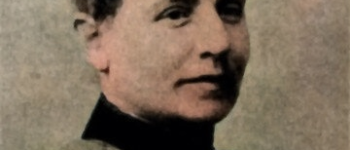




Brilliant article, just another from this magnificent site.
Your feedback very much appreciated
Very interesting.
That’s not a new hypothesis (or is it)?
It’s a fairly old hypothesis about women but a very new application to Liberal era politics. I’d be impressed to find someone else making these observations and I have had a good look.
Excellent article.. really interesting. I knew nothing about her before i read all this.
Thanks Heather. I was concerned about going overly Sociological and that Seddonites (they’re still around) might feel slighted. But most encouraged from these comments.
I wish it could be in print.